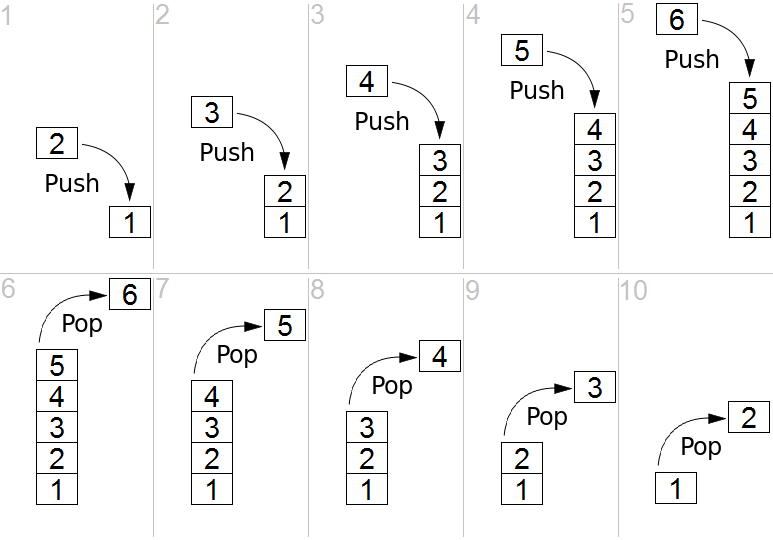const与引用
别名。一初始化,就必须指向某个对象,不能指向引用。
1 | int ival = 1024; |
const与指针
指向常量的指针(pointer to const)
不能用于修改其所指对象的值,常量对象的指针,只能使用指向常量的指针。
1 | const double pi = 3.14; |
const指针
常量指针必须初始化,且初始化完成后,其值不能再改变,也就是说只能一直指向某一个地址。可以通过此指针改变所指向对象的值。
1 | int errNumb = 0; |
从右往左法则
以const double *const pip = &pi为例,离pip最近的是const,说明pip本身的值不能改变,在往左,pip的类型是一个指针,说明pip是一个常量指针;在往左,说明pip是一个常量指针,它指向的对象是double类型;再往左,说明pip是一个常量指针,它指向的对象是一个double型常量的。
def的用途
用def定义的变量时无类型的变量,这里所说的无类型的变量,并不表示该变量就不属于某一个类型了,def修饰变量正是Groovy为动态语言的标记,大概def修饰变量就相当于Java中Object来修饰变量吧。如果通过使用def关键字使用可选类型,那么整数的类型将是可变的:它取决于这个类型实际包含的值。
1 | assert a instanceof Integer |
关于函数的定义
如果所定义的函数没有参数,那么必须在调用的时候加上括号。
要有返回值的类型声明,如def、void、String等。
可以使用return返回值,若不写,则默认返回最后一行的值,没有则为null。
闭包是什么?
A closure in Groovy is an open, anonymous, block of code that can take arguments, return a value and be assigned to a variable. A closure may reference variables declared in its surrounding scope. In opposition to the formal definition of a closure, Closure in the Groovy language can also contain free variables which are defined outside of its surrounding scope.Apache Groovy Doc
语法与用法
1 | { println 'hi' } |
访问外部变量
1 | def str='hello world' |
语法糖
- .闭包可作为一个参数传给另一个闭包,也可在闭包中返回一个闭包。
1 | def timesThree = { |
- 闭包的一些快捷写法.
- 当闭包作为闭包或方法的最后一个参数,可以将闭包从参数圆括号中提取出来接在最后。
- 如果闭包中不包含闭包,则闭包或方法参数所在的圆括号也可以省略。
- 对于有多个闭包参数的,只要是在参数声明最后的,均可以按上述方式省略。
闭包的Delegation代理
- this 指闭包所在的最近的类 .class
- owner 指定义闭包的宿主,不仅仅是类,还可能是一个闭包
- delegate 代理,默认使用的是owner
- delegate strategy 代理的代理策略
1 | def p = new Person(name:'Jessica', age:42) |
至此基本的东西差不多解决了。
其实关于堆栈的问题在脑海中盘旋了挺久的了。从C语言开始,到数据结构,再到现在的Java,它一直在!现在就让我们从头开始吧。
明确概念
首先应该明确堆和栈是不同的东西,其次数据结构中的堆和栈与编程语言中的堆和栈不是同一个概念。
从数据结构说起
栈:即Stack,是一个LIFO队列。对它的操作有pop(),push(),peek()等。

堆:即Heap,是一棵完全二叉树(heap的某一种),它的特点是父节点的值大于(小于)两个子节点的值(分别称为大顶堆和小顶堆)。
具体内容可以参考后续关于数据结构的系列博客。
再到C语言
1 | int a = 0; //全局初始化区 |
一个比较直观的感受就是使用malloc()函数分配出来的空间在堆上,其它经过系统初始化的在栈上。堆上的不能自己回收,栈上的会随着函数结束后自动回收。
Java中的堆和栈
堆区:存放所有new出来的对象本身
栈区:存放基本类型的变量数据和对象的引用
静态域:存放静态成员(由static定义)
常量池:存放字符串常量和基本类型常量(public static final)
很久没用过Python了,熟悉一下用法准备ms。
输入和输出
1 | var=input('input:') |
暂时理解input()读入一行数据,且可以加入提示信息。
读入一个整数:
1 | s = input('birth: ') |
基本注意事项
# 注释某行中其后的内容。
缩进代替C系列语言中的大括号。
大小写敏感。
字符串可用''或""包裹, \可用于转义。\n\t等
r’’表示’’内部的字符串默认不转义
'''表示多行输入
1 | print(r'\\\t\\') |
空值是一个特殊的值,用None表示。None不能理解为0,因为0是有意义的,而None是一个特殊的空值。
用全部大写的变量名表示常量。
三种除法,//地板除,/整除,得到浮点数,%取余。
在计算机内存中,统一使用Unicode编码,当需要保存到硬盘或者需要传输的时候,就转换为UTF-8编码。
ord()函数获取字符的整数表示,chr()函数把编码转换为对应的字符。
格式化:
1 | 'Hi, %s, you have $%d.' % ('Michael', 1000000) |
- 倒数append()
1
2
3
4
5
6
7
8fruits[-1]
'orange'
fruits[-2]
'banana'
fruits[-6]
Traceback (most recent call last):
File "<stdin>", line 1, in <module>
IndexError: list index out of range
insert(1, ‘hi’)
pop()
list中的元素类型可以不同
tuple
不可更改的list,声明用()
当你定义一个tuple时,在定义的时候,tuple的元素就必须被确定下来。
t = (1)定义的是自然数1,要定义成tuple需要加‘,’,规则。
t = (‘a’, ‘b’, [‘A’, ‘B’])其中的list是可变的。
dict
1 | d = {'Michael': 95, 'Bob': 75, 'Tracy': 85} |
- 判断是否存在dict中的两个方法
一是通过in判断key是否存在;
二是通过dict提供的get()方法,如果key不存在,可以返回None,或者自己指定的value。删除用pop(‘Bob’)。1
2
3
4
5'Thomas' in d
False
d.get('Thomas')
d.get('Thomas', -1)
-1
set
1 | s = set([1, 2, 3]) |
可以对集合进行&和|操作。
判断&循环
if
1 | age = 3 |
for…in
可打印list、tuple中的数据。
1 | names = ['Michael', 'Bob', 'Tracy'] |
while
1 | sum = 0 |
break&continue
同C系列语言
函数
内置函数
- abs()
- int()
- max()
- hex()
- isinstance()
函数名其实就是指向一个函数对象的引用,完全可以把函数名赋给一个变量,相当于给这个函数起了一个“别名”:1
2
3a = abs # 变量a指向abs函数
a(-1) # 所以也可以通过a调用abs函数
1
自定义函数
1 | def my_abs(x): |
- pass
什么都不做,作为占位符 - 返回多个值
在语法上,返回一个tuple可以省略括号,而多个变量可以同时接收一个tuple,按位置赋给对应的值,所以,Python的函数返回多值其实就是返回一个tuple
函数参数
默认参数
1
2
3
4
5
6def power(x, n=2):
s = 1
while n > 0:
n = n - 1
s = s * x
return s可变参数
1
2
3
4
5
6
7
8def calc(*numbers):
sum = 0
for n in numbers:
sum = sum + n * n
return sum
nums = [1, 2, 3]
calc(*nums)
14*nums表示把nums这个list的所有元素作为可变参数传进去。
关键字参数
1
2
3
4
5
6
7
8
9
10
11
12
13
14def person(name, age, **kw):
print('name:', name, 'age:', age, 'other:', kw)
person('Michael', 30)
name: Michael age: 30 other: {}
person('Bob', 35, city='Beijing')
name: Bob age: 35 other: {'city': 'Beijing'}
person('Adam', 45, gender='M', job='Engineer')
name: Adam age: 45 other: {'gender': 'M', 'job': 'Engineer'}
extra = {'city': 'Beijing', 'job': 'Engineer'}
person('Jack', 24, city=extra['city'], job=extra['job'])
name: Jack age: 24 other: {'city': 'Beijing', 'job': 'Engineer'}
extra = {'city': 'Beijing', 'job': 'Engineer'}
person('Jack', 24, **extra)
name: Jack age: 24 other: {'city': 'Beijing', 'job': 'Engineer'}**extra表示把extra这个dict的所有key-value用关键字参数传入到函数的**kw参数,kw将获得一个dict,注意kw获得的dict是extra的一份拷贝,对kw的改动不会影响到函数外的extra
命名关键字参数
- 命名关键字参数需要一个特殊分隔符*,*后面的参数被视为命名关键字参数。
- 如果函数定义中已经有了一个可变参数,后面跟着的命名关键字参数就不再需要一个特殊分隔符*了。
- 命名关键字参数必须传入参数名,这和位置参数不同。如果没有传入参数名,调用将报错 限定了kw中的关键字只能为city,job
1
2
3
4
5
6
7
8
9
10def person(name, age, *, city, job):
print(name, age, city, job)
person('Jack', 24, city='Beijing', job='Engineer')
Jack 24 Beijing Engineer
def person(name, age, *args, city, job):
print(name, age, args, city, job)
def person(name, age, *, city='Beijing', job):
print(name, age, city, job)
person('Jack', 24, job='Engineer')
Jack 24 Beijing Engineer
参数组合
参数定义的顺序必须是:必选参数、默认参数、可变参数、命名关键字参数和关键字参数。支持递归
高级特性
切片
1 | L = ['Michael', 'Sarah', 'Tracy', 'Bob', 'Jack'] |
迭代
1 | d = {'a': 1, 'b': 2, 'c': 3} |
列表生成式
1 | [x * x for x in range(1, 11)] |
生成器
1 | def fib(max): |
函数是顺序执行,遇到return语句或者最后一行函数语句就返回。而变成generator的函数,在每次调用next()的时候执行,遇到yield语句返回,再次执行时从上次返回的yield语句处继续执行。
小结
生成器都是Iterator对象,但list、dict、str虽然是Iterable,却不是Iterator。
把list、dict、str等Iterable变成Iterator可以使用iter()函数:
凡是可作用于for循环的对象都是Iterable类型;
凡是可作用于next()函数的对象都是Iterator类型,它们表示一个惰性计算的序列;
集合数据类型如list、dict、str等是Iterable但不是Iterator,不过可以通过iter()函数获得一个Iterator对象。
Python的for循环本质上就是通过不断调用next()函数实现的,例如:
1 | for x in [1, 2, 3, 4, 5]: |
函数式编程
高阶函数
- 传入函数
1
2def add(x, y, f):
return f(x) + f(y)
map/reduce
- map
1
2
3
4
5
6def f(x):
return x * x
...
r = map(f, [1, 2, 3, 4, 5, 6, 7, 8, 9])
list(r)
[1, 4, 9, 16, 25, 36, 49, 64, 81] - reduce
reduce(f, [x1, x2, x3, x4]) = f(f(f(x1, x2), x3), x4) - 两者综合
1
2
3
4
5
6
7
8from functools import reduce
DIGITS = {'0': 0, '1': 1, '2': 2, '3': 3, '4': 4, '5': 5, '6': 6, '7': 7, '8': 8, '9': 9}
def str2int(s):
def fn(x, y):
return x * 10 + y
def char2num(s):
return DIGITS[s]
return reduce(fn, map(char2num, s)) - filter
1
2
3
4
5
6
7
8def is_odd(n):
return n % 2 == 1
list(filter(is_odd, [1, 2, 4, 5, 6, 9, 10, 15]))
# 结果: [1, 5, 9, 15]
def not_empty(s):
return s and s.strip()
list(filter(not_empty, ['A', '', 'B', None, 'C', ' ']))
# 结果: ['A', 'B', 'C'] - sorted
1
2
3
4
5
6sorted([36, 5, -12, 9, -21], key=abs)
[5, 9, -12, -21, 36]
sorted(['bob', 'about', 'Zoo', 'Credit'], key=str.lower)
['about', 'bob', 'Credit', 'Zoo']
sorted(['bob', 'about', 'Zoo', 'Credit'], key=str.lower, reverse=True)
['Zoo', 'Credit', 'bob', 'about']




